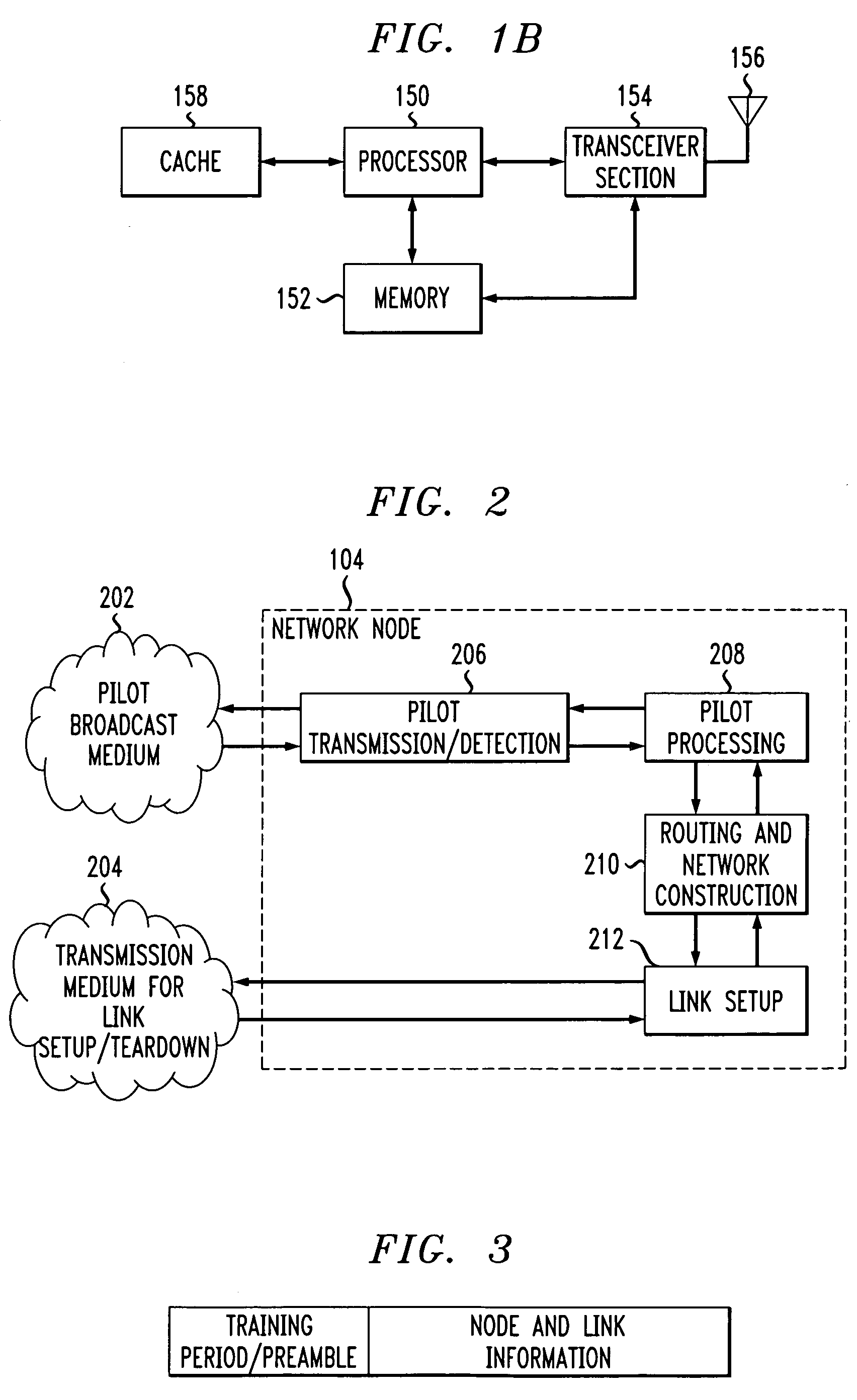Methods and apparatus for topology sensing in networks with mobile nodes
a topology sensing and wireless communication technology, applied in the field of communication networks, can solve problems such as difficult handling, difficult to solve, and serious problems such as routing convergence, and achieve good overall network connectivity and power and frequency reuse efficiency
- Summary
- Abstract
- Description
- Claims
- Application Information
AI Technical Summary
Benefits of technology
Problems solved by technology
Method used
Image
Examples
Embodiment Construction
[0034]The present invention will be illustrated below in conjunction with an exemplary wireless communications system in which both end user terminals, i.e., mobile stations, and system access points, i.e., network nodes, may be mobile. It should be understood, however, that the topology sensing methodologies of the invention are not limited to use with this particular exemplary system, but are instead more generally applicable to any communications system wherein both user terminals and system access points may be mobile. Further, the term “processor” as used herein is intended to include any processing device, such as a CPU (central processing unit) and / or other processing circuitry, which may be utilized in a mobile station or network node. Also, the term “memory” as used herein is intended to include memory associated with a processor or CPU, such as RAM, ROM, a fixed memory device (e.g., hard drive), or a removable memory device (e.g., diskette). In addition, the processing uni...
PUM
 Login to View More
Login to View More Abstract
Description
Claims
Application Information
 Login to View More
Login to View More - R&D
- Intellectual Property
- Life Sciences
- Materials
- Tech Scout
- Unparalleled Data Quality
- Higher Quality Content
- 60% Fewer Hallucinations
Browse by: Latest US Patents, China's latest patents, Technical Efficacy Thesaurus, Application Domain, Technology Topic, Popular Technical Reports.
© 2025 PatSnap. All rights reserved.Legal|Privacy policy|Modern Slavery Act Transparency Statement|Sitemap|About US| Contact US: help@patsnap.com



